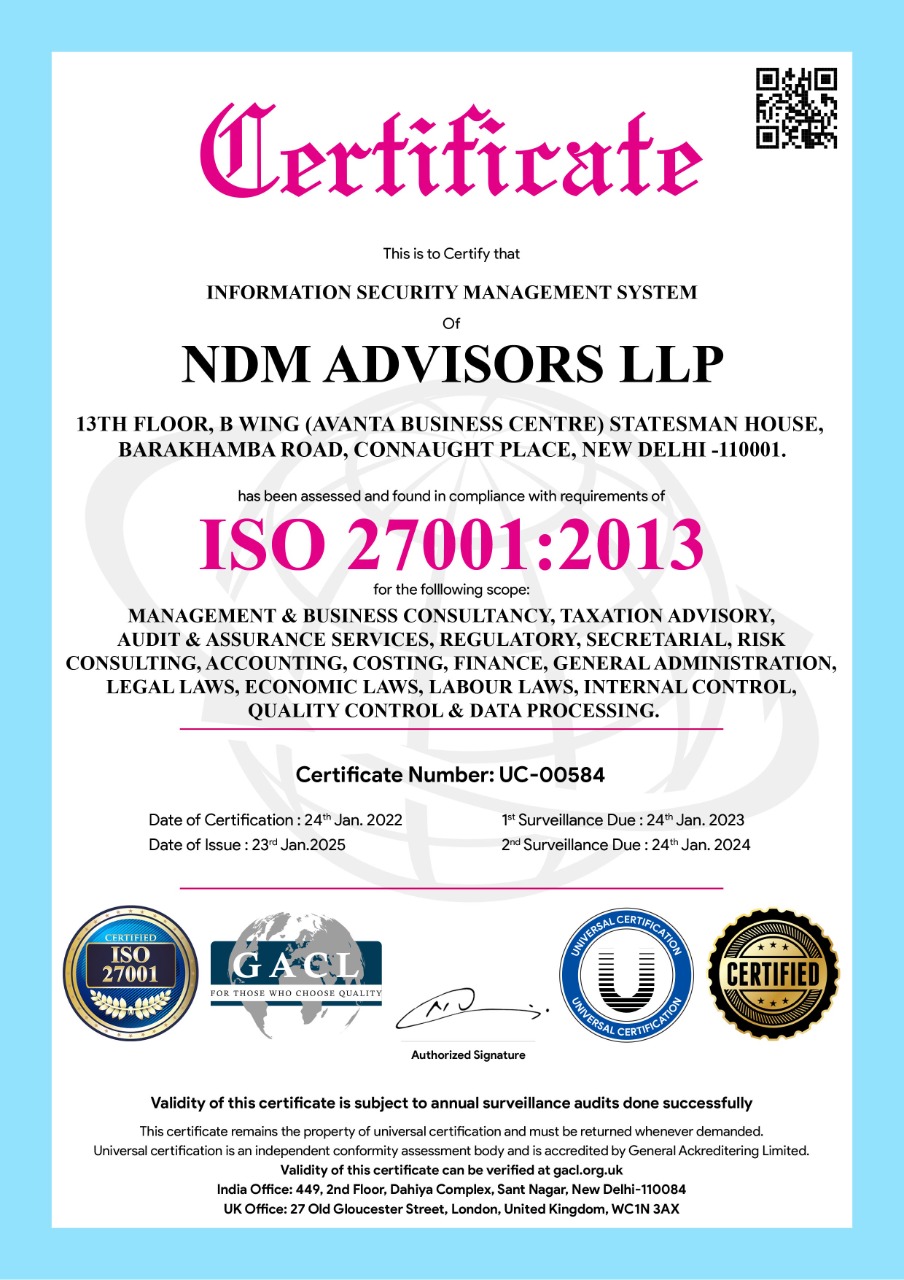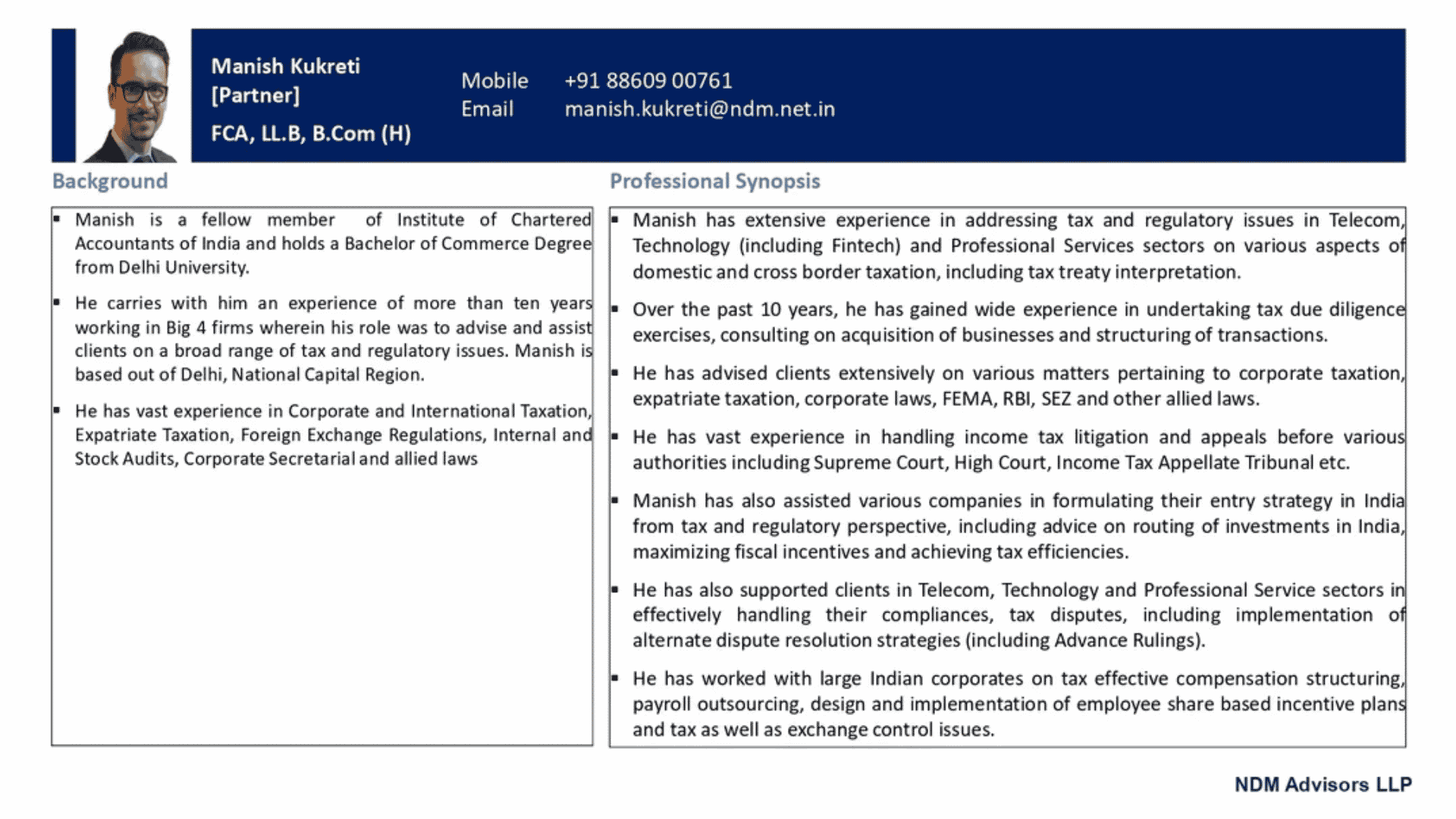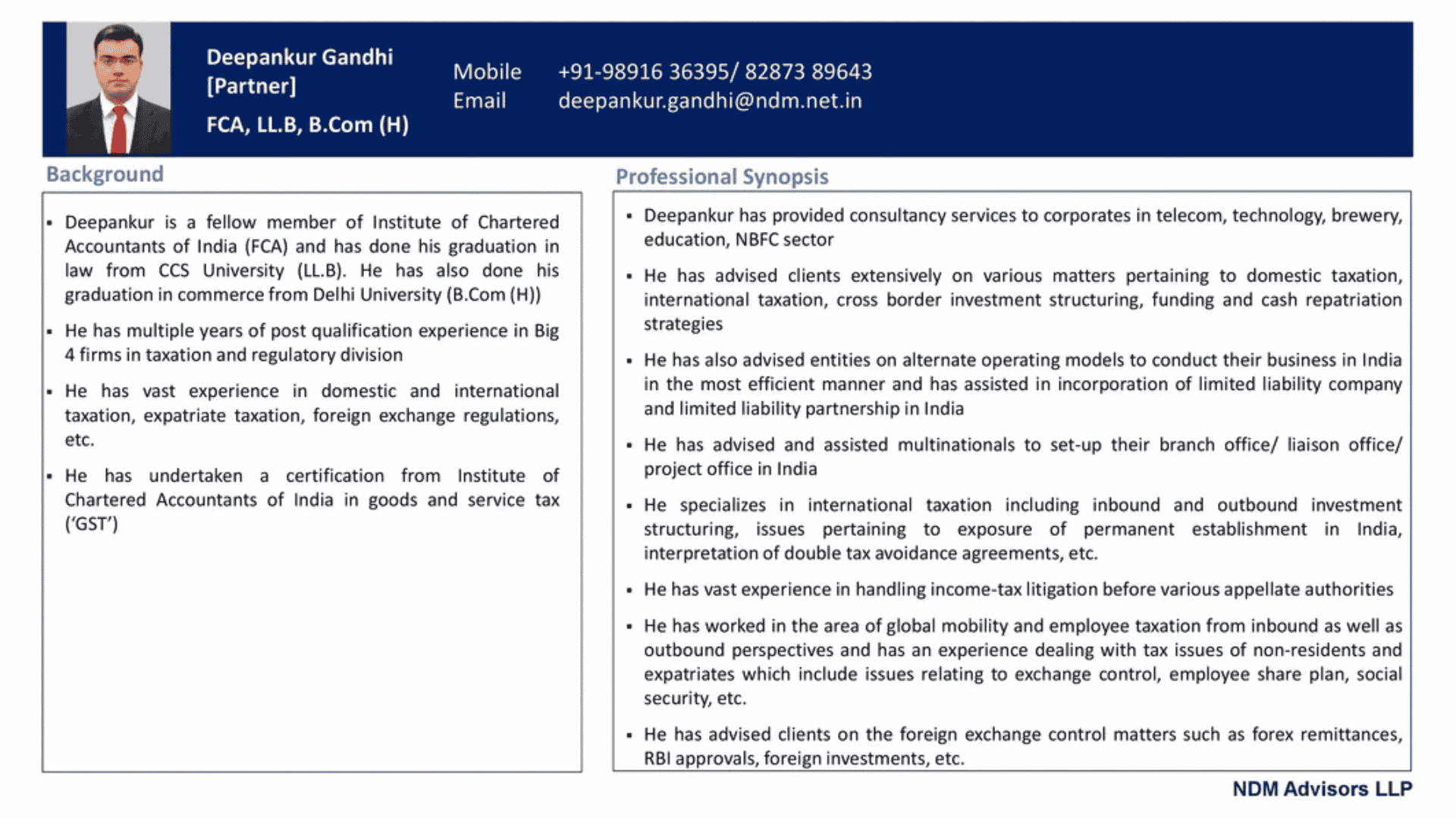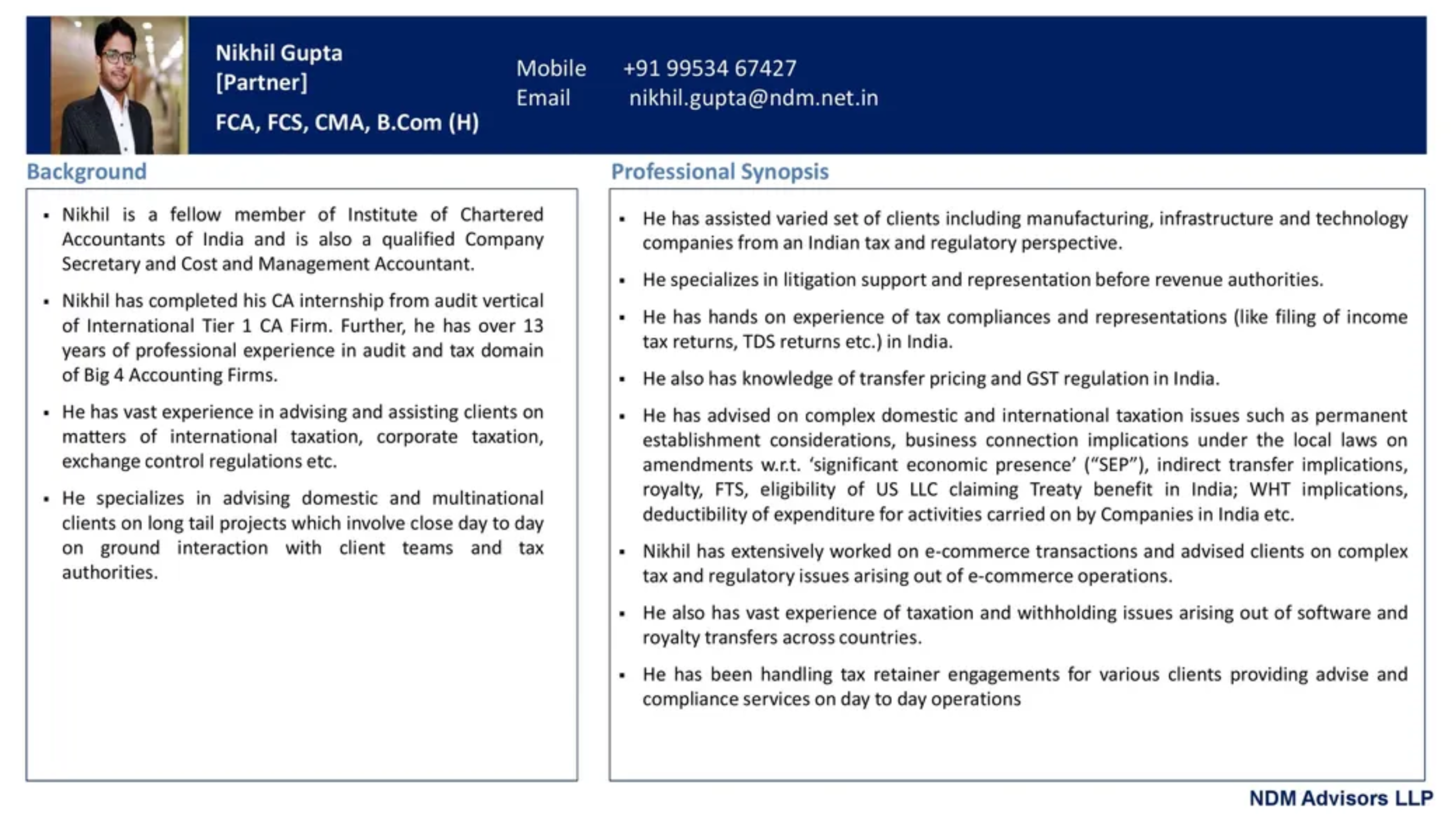OECD BEPS Action Plan 2- Rise of Substantialism

In this article, we discuss the marked shift towards substantialist approach to global taxation and how the OECD BEPS Action Plan 2 is a crucial variable in the same. The author also cautions the multinational entities to proactively analyse the impact on their risk prone components/ jurisdictions and as to how the MNEs operating in India would be affected by the same.
In this era of accelerated globalisation, cross border tax interactions have been high on the political agenda of the multinational entities (‘MNE’). Globalisation, inter-alia brings in inter-country mobility of corporate presence, employees, technology, intellectual property, know-how etc. With increased cross border movement of such elements comes tax controversies, most controversial one being cross border profit shifting and taxable base allocation. It has been seen that several large MNEs, in an attempt to avoid paying high taxes shift their profits to low-tax jurisdictions. The practice of profit shifting has affected the tax revenues of governments globally and led to deliberation on the idea of a global minimum corporate tax rate. Further since 1980s, the rate of global corporate tax rate has been declining due to Governments lowering their tax rates to attract more business in their respective jurisdictions. This gave rise to tax competition amongst countries in order attract business and investments. In order to avail the tax exemptions. MNEs have increasingly demonstrated changes to their operational structure in order to avail such tax incentives and reducing their global tax outflows.
Peculiarity of this ruling lies in the fact that post restructuring of the business operations, same functions were performed in India, however, under the garb of support activities as per the functional analysis of the entity. Pre restructuring, 100% of income from transaction processing activities was attributed to India operations and a 50% net profit rate was applied. Accordingly, pre restructuring, 50% of revenue was offered to tax, however, post restructuring, this was reduced to around 2.5%.

Organization for Economic Co-operation and Development (OECD) has been working towards development of an inclusive framework to move the global taxation laws towards substantialism and end the prevalent tax competition and base shifting tendencies. OECD finalized a historic agreement to subject multinational enterprises (MNEs) to a minimum 15% tax from 2023 in order to cap global tax competition. A total of 136 countries, including India, have agreed to join the agreement. This indeed is a major reform in international tax system and marks movement of world towards substantialist taxation practices as the introduction of minimum corporate tax would remove any sort of incentives for countries to offer rates lower than 15% thus, effectively reducing corporate tax evasions. Out of the 140 countries involved, 136 supported the deal, with Kenya, Nigeria, Pakistan and Sri Lanka abstaining for now.
OECD has laid down an ambitious roll out plan for implementation of BEPS Action Plan 2 (BEPS 2- Neutralising the effects of hybrid mismatch arrangements) which has also been supported by G20 countries. BEPS 2 lays down provisions for attribution of certain portion of global profits to the parent entity. Though operational mechanism and technical details are still to be implemented but it becomes imperative on the multinational enterprises (‘MNE’) to pro-actively analyse their global tax position and identify the high-risk group components/ jurisdictions and allied tax structures.

In this regard, the following are the trigger points for allocation as prescribed under BEPS Action Plan 2:
– Group Threshold: MNEs having global turnover exceeding Euros 20 billion and profitability (‘PBT/Revenue’) exceeding 10%;
– Component Threshold: Individual group entities having turnover equal to or more than Euro 1 million (in case of smaller jurisdictions, limit is Euro 0.25 million);
– Critical Areas:
- Digital taxes such as equalisation levy in India may be phased out;
- Group components operating in jurisdictions with base tax below 15% would be subject to adjustments;
- Outbound payments from India may potentially be subject to higher taxes in case where treaty benefits are availed to reduce the withholding tax liability (under STTR rules);
- CbCR reporting areas are expected to undergo changes in order to incorporate BEPS 2 mechanism;
From an Indian perspective, BEPS Action Plan 2 would have two major impact areas:
- Effects on Digital Taxation: India has around INR 4,000 crore as revenue from equalisation levy. The removal of equalisation levy is expected to cost India in terms of revenue.
- Lower rate of 15%: Indian statutory corporate tax rates were already reduced from 30% to 22% in November 2019, however, its benefits are yet to come to fruition. Further reduction of corporate tax rate is making analysts wonder if it would only result in reduced state revenue at the time of increased need after COVID-19 impact without any actual economic growth.
A uniform global framework is indeed a very effective step to prevent tax evasions by multinational enterprises, given that India is the second most affected country in Asia to tax abuses by MNCs. Despite the loss in revenue on account of removal of digital taxes countries are expected to gain at the expense of tax havens.
Understanding the agreement in its basic raw form the OECD/G20 Inclusive Framework on Base Erosion and Profit Shifting (IF) has agreed a two-pillar solution to address the tax challenges arising from the digitalisation of the economy.

Consistent with the statement of 1 July 2021, two Pillars are covered, out of which, Pillar 1 deals with the reallocation of certain profits from very large Multinational Enterprises (MNEs) to market jurisdictions and Pillar 2 deals with a Global Minimum Tax.
Proposed Timelines:
- Early 2022: Conclude the text of MLC and explanatory statement (Allocation Amount);
- Mid 2022: Development of MLI and MLC signing ceremony;
- End of 2022: Finalise work on ALP for Marketing and Distribution Activities
- November 2022: Model Rules (including model treaty provisions) for GloBE
- 2023: Ratification (entering into force) of MLC;
Pillar 1
I. Coverage- Multinational Enterprises (‘MNEs’) fulfilling following criteria:
a. global turnover exceeding Eur 20 Billion (subsequent reduction to Eur 10 Billion); and
b. global profitability (PBT/Revenue) exceeding 10%
The Multilateral Convention (‘MLC’) through which allocation is implemented will be developed and opened for signature in 2022, with the same coming into effect in 2023.
II. Exclusion- Extractive Industries and Regulated Financial Services Sector
III. Nexus- Allocation of specified amount when specified MNE derives Eur 1 Mn from a market jurisdiction (for jurisdictions with GDP lower than Eur 40 bn, threshold set at Eur 250 000)
IV. Quantum and Revenue Sourcing- 25% of the residual profit exceeding 10% revenue (sourced to end user jurisdiction) be allocated to market jurisdiction
V. Tax Base- Financial accounting income with small number of adjustments will be the measure for profit/loss
VI. Safe Harbour and Tax Credit- In case the profits are already taxed in market jurisdiction, allocation mechanism would be capped. Double taxation would be eliminated by way of credit or exemption method.
VII. Dispute Resolution-Eligible MNEs shall be eligible to avail benefit of dispute prevention and resolution mechanism to avoid litigation/ disputes in a mandatory and binding manner.
VIII. ALP for Marketing and Distribution Activities- The application of the arm’s length principle to in-country baseline marketing and distribution activities will be simplified and streamlined, with a particular focus on the needs of low capacity countries (to be completed by the end of 2022).
IX. Administration-Single entity reporting and tax compliance management to be implemented.
X. Unilateral measures- The Multilateral Convention (MLC) will require all parties to remove all Digital Services Taxes and other relevant similar measures with respect to all companies, and to commit not to introduce such measures in the future. No newly enacted Digital Services Taxes or other relevant similar measures will be imposed on any company from 8 October 2021 and until the earlier of 31 December 2023 or the coming into force of the MLC. The modality for the removal of existing Digital Services Taxes and other relevant similar measures will be appropriately coordinated.
Pillar 2
I. Mechanism-
a. Two interlocking domestic rules [together the Global anti-Base Erosion Rules (GloBE) rules]: (i) an Income Inclusion Rule (IIR), which imposes top-up tax on a parent entity in respect of the low taxed income of a constituent entity; and (ii) an Undertaxed Payment Rule (UTPR), which denies deductions or requires an equivalent adjustment to the extent the low tax income of a constituent entity is not subject to tax under an IIR; and
b. a treaty-based rule (the Subject to Tax Rule (STTR)) that allows source jurisdictions to impose limited source taxation on certain related party payments subject to tax below a minimum rate. The STTR will be creditable as a covered tax under the GloBE rules.
II. Rule Status- GloBE rules shall be considered basis common approach, i.ethe IF members: (i) are not required to adopt the GloBE rules, but, if they choose to do so, they will implement and administer the rules in a way that is consistent with the outcomes provided for under Pillar Two, including in light of model rules and guidance agreed to by the IF; (ii) accept the application of the GloBE rules applied by other IF members including agreement as to rule order and the application of any agreed safe harbours.
III. Coverage-GloBE rules apply to MNEs meeting the Eur 750 million threshold prescribed under BEPS Action 13 (country by country reporting). Countries are free to apply the IIR to MNEs headquartered in their country even if they do not meet the threshold.
[Exclusion- Government entities, international organisations, non-profit organisations, pension funds or investment funds that are Ultimate Parent Entities (UPE) of an MNE Group or any holding vehicles used by such entities, organisations or funds are not covered under GloBE rules].
IV. Rule Design- The IIR allocates top-up tax based on a top-down approach subject to a split-ownership rule for shareholdings below 80%. The UTPR allocates top-up tax from low-tax constituent entities including those located in the UPE jurisdiction. The GloBE rules will provide for an exclusion from the UTPR for MNEs in the initial phase of their international activity, defined as those MNEs that have a maximum of EUR 50 million tangible assets abroad and that operate in no more than 5 other jurisdictions. This exclusion is limited to a period of 5 years after the MNE comes into the scope of the GloBE rules for the first time. For MNEs that are in scope of the GloBE rules when they come into effect the period of 5 years will start at the time the UTPR rules come into effect.
V. ETR calculation- The GloBE rules will operate to impose a top-up tax using an effective tax rate test that is calculated on a jurisdictional basis and that uses a common definition of covered taxes and a tax base determined by reference to financial accounting income (with agreed adjustments consistent with the tax policy objectives of Pillar Two and mechanisms to address timing differences). In respect of existing distribution tax systems, there will be no top-up tax liability if earnings are distributed within 4 years and taxed at or above the minimum level.
VI. Minimum rate and Carve Outs- The minimum tax rate used for purposes of the IIR and UTPR will be 15%. The GloBE rules will provide for a formulaic substance carve-out that will exclude an amount of income that is 5% of the carrying value of tangible assets and payroll. In a transition period of 10 years, the amount of income excluded will be 8% of the carrying value of tangible assets and 10% of payroll, declining annually by 0.2 percentage points for the first five years, and by 0.4 percentage points for tangible assets and by 0.8 percentage points for payroll for the last five years. The GloBE rules will also provide for a de minimis exclusion for those jurisdictions where the MNE has revenues of less than EUR 10 million and profits of less than EUR 1 million. An MNE is considered to operate in a jurisdiction if that MNE has a Constituent Entity in that jurisdiction as defined for purposes of the GloBE rules.
VII. Other exclusions- The GloBE rules also provide for an exclusion for international shipping income using the definition of such income under the OECD Model Tax Convention.
VIII. Simplifications- To ensure that the administration of the GloBE rules are as targeted as possible and to avoid compliance and administrative costs that are disproportionate to the policy objectives, the implementation framework will include safe harbours and/or other mechanisms.
IX. GILTI co-existence- It is agreed that Pillar Two will apply a minimum rate on a jurisdictional basis. In that context, consideration will be given to the conditions under which the US GILTI regime will co-exist with the GloBE rules, to ensure a level playing field.
X. Subject to tax rule (STTR)- IF members recognise that the STTR is an integral part of achieving a consensus on Pillar Two for developing countries. If members that apply nominal corporate income tax rates below the STTR minimum rate to interest, royalties and a defined set of other payments would implement the STTR into their bilateral treaties with developing IF members when requested to do so. The taxing right will be limited to the difference between the minimum rate and the tax rate on the payment. The minimum rate for the STTR will be 9%.
XI. Implementation- Pillar Two should be brought into law in 2022, to be effective in 2023, with the UTPR coming into effect in 2024.
Have Any Question?
Send us a message and tell us more about your business and financial goals. We will get back to you soon to schedule a consultation.
- +91 9873210394
- Communications@ndm.net.in


















